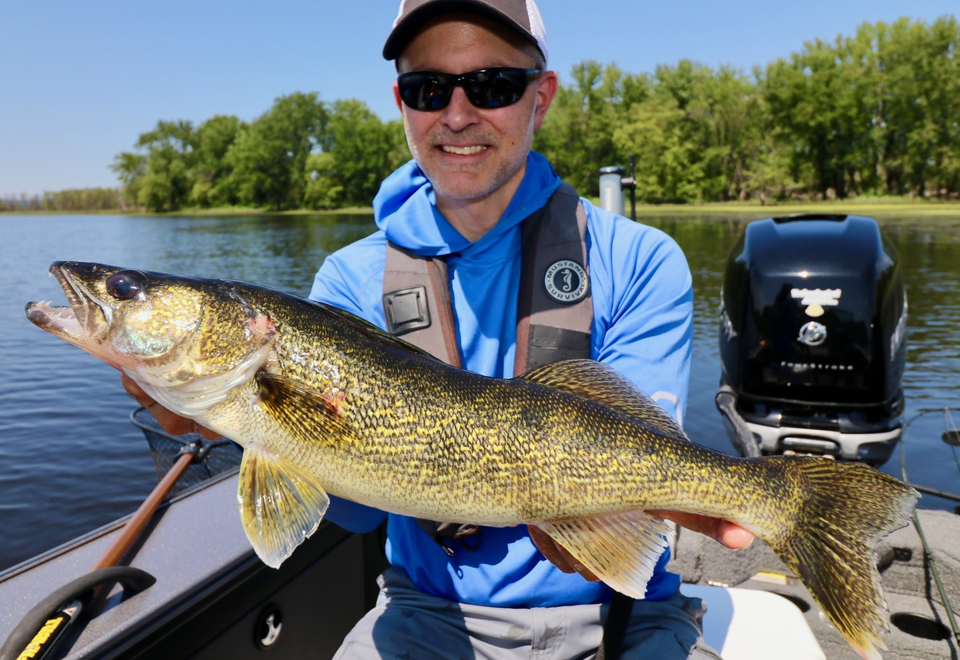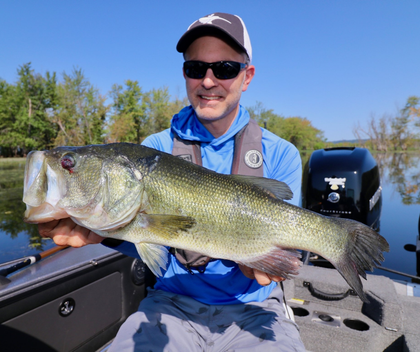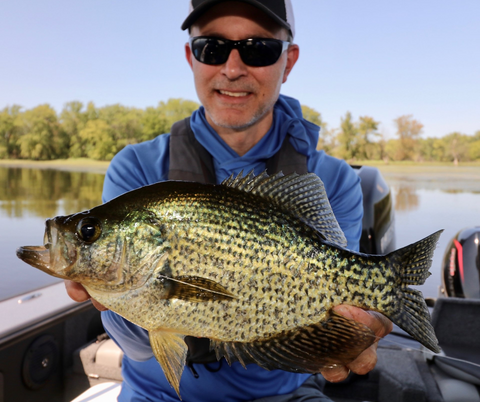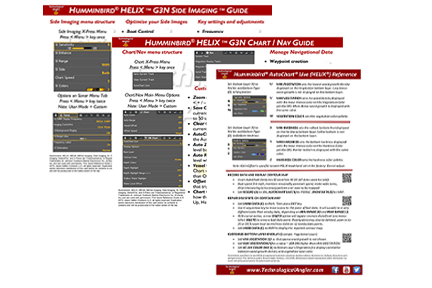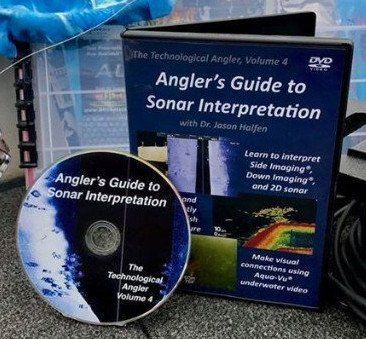The dog days of summer have arrived. I’m certain that you’ve seen the signs. Air temperatures are sky high, matched only by oppressive humidities. In many regions of the country, a wet spring has yielded to a bone-dry summer, causing water levels to fall and frequently, thick algae to bloom. The frenzied fishing action that many of us enjoyed leading up to Independence Day has evolved into a daily grind, scratching out a fish here and a fish there while working hard to stay hydrated and lathered with sunscreen.
But it doesn’t have to be this way. No, I can’t make the heat go away, and my rain dance has never been proven successful. However, the tough fishing that characterizes the midsummer period is truly optional. Here are two patterns you can use right now to defeat the dog days.
But it doesn’t have to be this way. No, I can’t make the heat go away, and my rain dance has never been proven successful. However, the tough fishing that characterizes the midsummer period is truly optional. Here are two patterns you can use right now to defeat the dog days.
Hit the slop
The number of quality largemouth bass that are sucked into shallow slop by midsummer is truly amazing. The key reason for this predictable congregation is easy to understand: matted weedgrowth on the surface, and the duckweed, algae and “gunk” it collects, provides protection from the sweltering sun. Slightly lower water temperatures, coupled with a generally darker region beneath the surface, yield a bass-concentrating habitat that is hard to beat.
Bass in the slop remain supercharged with an amped-up metabolism, and when the opportunity to steal a meal presents itself, slop bass are generally quite responsive. Slop edges can be probed with Texas-rigged soft plastics beneath the surface and poppers up on top. However, when bass are way back in the thick stuff, there are few presentations more effective than a hollow body frog.
Snagless hollow body baits are easy to fish. Make long casts into the slop, crank the reel a few times, and then pause. The motion of the lure across the surface will send vibrations beneath the mated vegetation, alerting bass to the lure’s presence; expect most of your strikes during the pause. While the frog is stationary, don’t be afraid to twitch and shake it with the rod tip, and spend extra time lingering around edges, pockets, holes, and other structural elements within the slop – things like sunken tree limbs and embedded areas of lily pads can collect large numbers of bass. One of the most critical aspects of hollow body frog fishing occurs after the strike – don’t set the hook immediately! A seasoned tournament pro once told me, “I’ve taught myself to count to five after a bass hits a frog; then I set the hook. If I don’t wait that long, I’m missing a huge percentage of my fish.”
Bass in the slop remain supercharged with an amped-up metabolism, and when the opportunity to steal a meal presents itself, slop bass are generally quite responsive. Slop edges can be probed with Texas-rigged soft plastics beneath the surface and poppers up on top. However, when bass are way back in the thick stuff, there are few presentations more effective than a hollow body frog.
Snagless hollow body baits are easy to fish. Make long casts into the slop, crank the reel a few times, and then pause. The motion of the lure across the surface will send vibrations beneath the mated vegetation, alerting bass to the lure’s presence; expect most of your strikes during the pause. While the frog is stationary, don’t be afraid to twitch and shake it with the rod tip, and spend extra time lingering around edges, pockets, holes, and other structural elements within the slop – things like sunken tree limbs and embedded areas of lily pads can collect large numbers of bass. One of the most critical aspects of hollow body frog fishing occurs after the strike – don’t set the hook immediately! A seasoned tournament pro once told me, “I’ve taught myself to count to five after a bass hits a frog; then I set the hook. If I don’t wait that long, I’m missing a huge percentage of my fish.”
Tackle for slop froggin’ is necessarily stout. Choose a rod longer than 7 feet to help with casting distance and to move a lot of line on the hookset. Because we need to horse fish out of the thick stuff once they’re hooked, consider rods with medium heavy or heavy power and fast or extra fast action. Strong, no-stretch braided line is the only way to go. I’ve enjoyed excellent results with 65 lb test Seaguar Smackdown in this application. It completely eliminates breakoffs, and the smooth finish of Smackdown lets me cast frogs a mile. Moreover, the Stealth Gray color gives me a distinct advantage by reducing the visibility of the line to fish beneath the surface.
Weeds + current = fish
The middle of summer represents one of the key calendar periods that draws me toward rivers. Moving water offers a constantly renewed supply of life-sustaining dissolved oxygen, concentrating forage and the predatory fish that we pursue. Deep, high-current areas will frequently be packed with catfish, drum, and other whiskered fish, while shallow areas with a combination of sustained flow and cover – especially weeds – can be a midsummer bonanza.
Current-swept weeds frequently hold a wide variety of fish species, from panfish and bass to walleye and pike. As such, I approach these areas with generic presentations that will have broad multispecies appeal. If I’m looking for crappies, perch or sunfish for the pan, I will tie on a 1/16 oz jig dressed with a 1.5” soft plastic minnow-profile bait. On the other hand, to target fish at the larger end of the overall size spectrum, a 1/10 oz jig adorned with a Z-Man TRD is hard to beat. Cast either lure right to the edge of the weeds, and aside from a twitch here and a hop there, let the current do the work. Fish holding in or near the weeds are used to surveying the flow for an easy meal, darting out from cover to snare a quick snack. That’s the exact appearance we’re working to emulate with a lightweight, finesse lure. Less is definitely more when it comes to presenting soft baits in current.
Current-swept weeds frequently hold a wide variety of fish species, from panfish and bass to walleye and pike. As such, I approach these areas with generic presentations that will have broad multispecies appeal. If I’m looking for crappies, perch or sunfish for the pan, I will tie on a 1/16 oz jig dressed with a 1.5” soft plastic minnow-profile bait. On the other hand, to target fish at the larger end of the overall size spectrum, a 1/10 oz jig adorned with a Z-Man TRD is hard to beat. Cast either lure right to the edge of the weeds, and aside from a twitch here and a hop there, let the current do the work. Fish holding in or near the weeds are used to surveying the flow for an easy meal, darting out from cover to snare a quick snack. That’s the exact appearance we’re working to emulate with a lightweight, finesse lure. Less is definitely more when it comes to presenting soft baits in current.
If I had to pick one reliable combination of rod, reel and line for multispecies fishing along current-swept weeds, it would include a 7’6” spinning rod with medium light power and fast or extra fast action, paired with a 2500-series spinning reel spooled with 20 lb test Seaguar Smackdown in Flash Green, and finished with a 24” leader of 15 lb test Seaguar InvizX, Many strikes along current-swept weeds are subtle, and the high visibility of Flash Green Smackdown provides me with the advantage for detecting bites visually – when the line doesn’t sweep downstream as expected, or suddenly hops or twitches, it’s game on! The 100% Seaguar fluorocarbon leader virtually eliminates line visibility at the lure, so fish are none the wiser.
The heat and humidity of summer are here to stay, but poor fishing is optional. Whether you target bucketmouths in the slop or pursue multispecies fun along current-swept weeds, the patterns presented here will surely help you defeat the dog days!
LEARN MORE FROM THE TECHNOLOGICAL ANGLER
